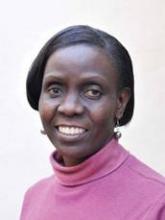Preterm birth accounts for 35% of mortality globally. However, neonatal survival programs focus on providing essential newborn care and teaching neonatal resuscitation. Therefore, a broader holistic approach is needed for effective intervention strategies to improve newborn survival, especially in low- and middle-income countries where most newborn deaths occur.
In Uganda, there are 1.5 million births annually, with 45,000 neonatal deaths and 45,000 stillbirths per year.The neonatal mortality rate and maternal mortality ratio are 29 per 1,000 and 435 per 100,000* live births, respectively. Birth asphyxia (26%), preterm complications (27%), and infections (31%) are the major causes of neonatal death. Until 2006, when we started our interventions, there were no clinical services for high-risk newborns, no records of outcome, or any resources for managing high-risk newborns in the country or for tracking all birth outcomes in the community. District health plans did not include high-risk newborn management.
T
he goal of our project was to improve survival by strengthening the capacity of existing health system infrastructure and to provide accessible and affordable health care for high-risk, sick, and preterm neonates. Our aim was to link existing community resources, locally active nongovernmental organizations (NGOs), and the government health care system to provide maternal and newborn care education across all levels of health care and to develop a tracking system that would accurately report both community and health system–based neonatal outcomes.
In rural Kayunga district, we began a stepwise process that started with a series of advocacy meetings for newborn health with different stakeholders and partners at all levels, and was followed by consensus and dialogue meetings with district leaders on how to proceed. The meetings included identifying gaps and priority areas, existing and additional resources that were required, as well as who could provide them. A vision was formulated by the beneficiaries, who then went ahead to design an implementation plan that followed a holistic approach and was within the policy framework using evidence-based interventions. Capacity strengthening included all levels of health service delivery (community to national). The implementing body maintained a close relationship with the District Health Team to support implementation of their district program, ensuring that the decisions came from them. Resources were pooled from many different programs. Teams and partnerships were formed that carried out activities that tried to address all aspects of high-risk newborn care in order to improve neonatal survival in the district. A three-phased implementation plan included community mapping of resources available for use, training all levels of health care providers in skills to care for high-risk and premature newborns, and establishing an infrastructure with strategies for care of high-risk newborns at Kayunga District Hospital was developed.
Two-hundred and forty health-related facilities providing maternity care were identified in Kayunga District, including district hospitals (1), health centers (19), domiciliary facilities (4), maternity homes (2), private clinics (117), and drug shops (97). Almost half (106/220) of the private facilities are owned by registered health professionals qualified or licensed by the government.
In Bbaale subcounty, we taught standard newborn care, maternal and newborn danger signs, guidelines for referral, and basic resuscitation skills to all delivery care providers and experienced health professionals in the local communities, including midwives and traditional birth attendants. They were taught how to calculate and prepare fluid and drug doses, the administration of intravenous fluid and antibiotics, and infection control methods. They also learned how to administer oxygen, how to insert and use nasogastric tubes for gavage feeding of expressed breast milk, and how to implement skin-to-skin/kangaroo mother care.
In addition to a "Train the Trainer" workshop, we held individual all-day workshops for district hospital staff, health center staff, government midwife and nursing students, private midwives, auxiliary health workers, village health secretaries, and Childhealth Advocacy International staff. Traditional birth attendants were instructed individually. We distributed basic resuscitation equipment (self-inflating bag and masks) to all participants who performed deliveries. Overall, we trained Kayunga District Hospital staff (87), midwives (18), lower level health workers (102) and village health team/community health workers which included village health secretaries (32), private midwives (7), traditional birth attendants (5), and auxiliary health workers (21).
To improve care at the Kayunga District Hospital, following consultation with our team, a space was remodeled to create a special care baby unit and kangaroo mother care area adjacent to labor and delivery. A separate space was enclosed on the pediatric ward as a neonatal room for admission and care for sick newborns. We then provided donated equipment and supplies for care and resuscitation. We also initiated a newborn follow-up clinic held weekly in the corridor of the pediatric ward.



